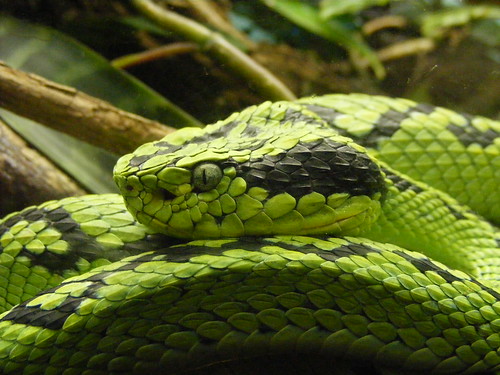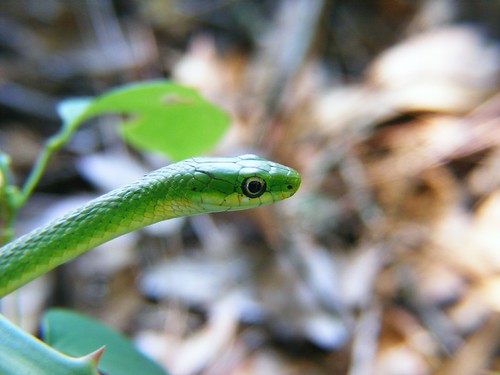Agkistrodon piscivorus is a venomous snake, a species of pit viper, found in the eastern United States. Adults are large and capable of delivering a painful and potentially fatal bite.[citation needed] This is the world's only semi-aquatic viper, usually found in or near water, particularly in slow-moving and shallow lakes and streams.
The snake is a strong swimmer and will even enter the sea, successfully colonizing islands off both the Atlantic and Gulf coasts. The common names for the species include variants on water, swamp or black 'moccasin', 'viper', 'cottonmouth', and 'rattler'. Many of the common names refer to the threat display, where this species will often stand its ground and gape at an intruder, exposing the white lining of its mouth.
This is a list of common names for Agkistrodon piscivorus, some of which also refer to other species: Water moccasin, cottonmouth, black moccasin, black snake, blunt-tail moccasin, congo, copperhead, cottonmouth water moccasin, cotton-mouthed snake, gapper, highland moccasin, lowland moccasin, mangrove rattler, moccasin, North American cottonmouth snake, North American water moccasin, North American water viper, pilot, rusty moccasin, stub-tail, stump moccasin, stump-tail moccasin, stump-tail viper, swamp lion, Texas moccasin, trap jaw, Troost's moccasin, true horn snake, true water moccasin, viper, water mokeson, water pilot, water adder, water rattlesnake, water viper, cotton-mouth snake, gaper, snap jaw.
The diet consists mainly of fish and frogs, but is otherwise highly varied and, uniquely, has even been reported to include carrion. The specific name is derived from the Latin words piscis and voro, which mean "fish" and "to eat".








